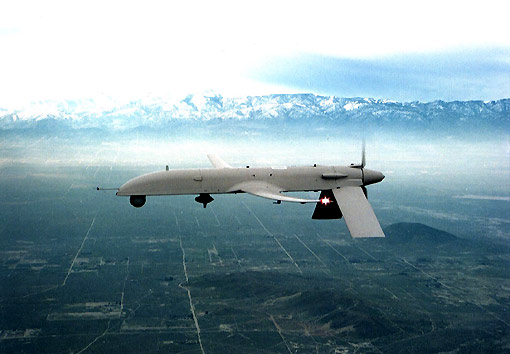The long-awaited attempt by the U.S. government to account for its use of drones to kill terrorist targets outside the ‘hot battlefields’ has served only to further cloud the issue.
The U.S. President’s July 1st Executive Order and accompanying Director of National Intelligence (DNI) summary fall far short of bringing the policy in line with the government´s legal obligations, while at the same time undercutting work that PAX and other organizations are doing to bring more transparency to the US drone programme.
The US government believes it can carry out lethal drone strikes based on laws meant to govern armed conflict, even though the strikes to which these documents refer occur beyond any theatre of battle, where human rights law ought to prevail. One troubling consequence of having no geographic boundary to the use of lethal force is that the ability to protect civilians is extremely limited. Civilians cannot avoid the battlefield if there is no clarity where the battlefield is. In addition, the two documents make other references to self-defence, which further muddy the waters. It is extremely difficult to understand what legal authority the U.S. believes it is acting under.
Precedent setting
Second, these documents may set a precedent not only for future U.S. administrations, but for other governments and entities in their use of armed drones. Until now, other governments have not said much about their use of armed drones – the new elaboration of U.S. policy may feed into other governments´ or entities´ own policies and procedures, running the risk of putting even more civilians in harm’s way.
Fuzzy methods
The DNI summary is also vague regarding methodology, rendering its conclusions “virtually meaningless”, as noted by the American Civil Liberties Union’s Hina Shamsi. The summary includes only a portion of the total number of recorded civilian casualties from drone strikes carried out under the Obama administration. But little information is given about the location of the strikes considered in the summary, or which instances of civilian casualties were included. This is deeply problematic. Without this clarity, it is impossible to fully understand the implications of the counterterrorism strikes and impossible to determine whether they comply with long-standing legal obligations.
Undercuts NGOs
There is another problem with the DNI summary in relation to its methodology. Given that the number of deaths the DNI reports is a mere fraction of those published in credible reports from independent NGO investigations, the DNI summary effectively disparages the methodology NGOs use. The government claims that the NGO figures are higher because they might include what amounts to terrorist propaganda. However, NGOs are extremely transparent about how they reach their figures. The DNI, on the other hand, does not reveal where the government gets its information. We are merely assured that it comes from “post-strike methodologies that have been refined and honed over the years” using “information that is generally unavailable to non-governmental organizations.” This boils down to the DNI’s saying: “our numbers are right, just trust us.”
This kind of summary is a severe blow to attempts at transparency and does not assist in objectively assessing the methodology used for compliance with legal obligations. Furthermore, though tasked to review or investigate incidents involving civilian casualties by considering information from NGOs, among other sources, there has been no meaningful engagement from the administration or relevant agencies for clarification of information provided by many NGOs carrying out independent research.
Finally, the fact that the obligations are set out in an executive order, rather than in legislation, means that any future president can do away with them with a stroke of a pen, raising significant questions about the value of these measures and their overall long-term impact on the protection of civilians in counterterrorism operations.
Need for transparency
For the reasons outlined above, PAX is deeply concerned that this first summary by the DNI interpreting the obligations outlined in the executive order actually raises more questions than it answers and can further complicate an already murky quest for transparency and accountability. In the wake of the Obama administration’s attempts to clarify its position, much more remains to be done. PAX will continue its work to press for more clarification and openness on these and related issues. 
Contact: Jessica Dorsey, Program Officer, Humanitarian Disarmament, PAX
Coordinator, European Forum on Armed Drones dorsey@paxforpeace.nl




